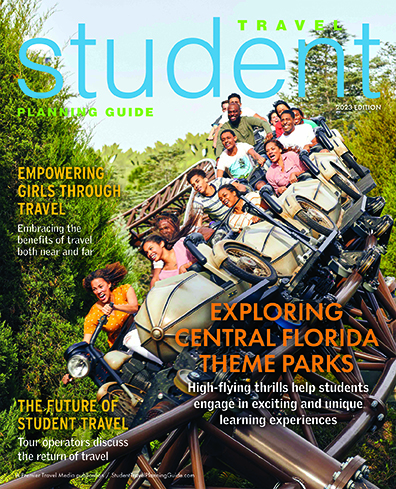The student travel experience is part of scholastic culture. Whether it’s a middle school weekend in Washington DC or a college semester spent studying in Barcelona, these excursions are as unforgettable as they are educational.
There’s a new trend developing, though. Many previous student travel itineraries centered around art, history or culture. Today, though, many STEM-fueled trips are emerging. These give students the opportunity to learn about a new culture while they simultaneously expand their knowledge of science, technology, engineering and math. Let’s focus in on the science aspects of STEM travel. What destinations are going to be hot in 2019?
The following destinations are not glorified laboratories – they’re real places where students can get some hands-on experience while immersing themselves in another way of existing. In other words, they are a supreme STEM-related student travel experience.
Australia
Why Australia? In many ways, Australia is an ideal middle ground for student travel. There are adventures to be had, but the culture and food are similar enough to be non-threatening to less well-traveled pupils. And there’s no language barrier. However, this isn’t to say that a trip to Australia is one homogenous experience; the country boasts a mix of natural environments, adrenaline-filled activities and cultural heritage.
Top Science Destinations: First, foremost, and by far the most popular is the Great Barrier Reef. This 1,400-mile-long reef system is home to over 600 types of coral, 1,500 species of fish, hundreds of bird species and dozens of kinds of dolphins and whales. However, it’s a protected area, so group visits are subject to certain requirements.
Sydney’s Australian Museum is another must-see. With exhibitions that range from natural history to indigenous culture — and Australia’s biggest science festival — it’s a great way to experience quite a lot in just one place.
Sample Tour: Appleseed Expeditions – Australia: Adventure to Down Under
Bali
Why Bali? Bali’s tropical waters, sandy beaches and near-perfect climate make it popular with honeymooners, but this Indonesian island can teach kids a lot of science — especially when it comes to sustainability. The water around Bali supports the world’s most diverse marine ecosystem. Once the science is done, it’s good to remember that Bali has some of the best surfing and water sports in the world.
Top Science Destinations: The big science draw here is the Indonesian Biodiversity Research Center. A collaboration between the Smithsonian Institution, UCLA and other universities, it does more than further research or teach kids the basics of marine ecology. In the tour package mentioned below, students are given the chance to participate, working with researchers to help rebuild a coral reef or study the reef inhabitants.
Similarly, the Biosphere Foundation focuses on creating a healthy and sustainable environment that works with human activities rather than independently of them. It’s a hands-on place, where kids get to spend several weeks learning with their Indonesian classmates.
Sample Tours: Go Overseas: Biosphere Foundation; National Geographic Expeditions: Bali Expedition
The Azores Islands
Why the Azores? Iceland might be getting all the love when it comes to being unique, but the Azores are going to give it a run for its money. Set well off the coast of Portugal — as in 850 miles, or in the middle of the North Atlantic Ocean — these volcanic islands offer a mild climate and a varied geography. Like Iceland, there are thermal springs and breathtaking scenery. But the Azores are really quite different.
Top Science Destinations: The Azores are very remote, and they are considered somewhat off the beaten path of student tourism, but their very remoteness is what makes them a great destination. You can still score memorable activities such as going whale watching or visiting the underground Capelinhos Volcano Interpretation Centre. The slightly gory but fan-favorite Museu da Industria Baleeira gives students a look into the history of whaling, which can lead to lively discussions about how humans’ perception of their environmental rights and duties has changed.
Sample Tour: ACIS: Discovering STEM in the Azores
London
Why London?: Okay, the UK might not rank high on the list of exotic places for students to visit, but there’s a long history of scientific endeavor here — depending on who you ask, it dates back to Stonehenge. Even more importantly, London continues to innovate. Plus, as a destination, London has a tremendous number of tours, museums and other activities to choose from. Note: Like New York, London destinations are often referred to by neighborhood names, such as Greenwich or Hammersmith., but these are still part of the Greater London Area.
Top Science Destinations: South Kensington’s Science Museum is one of the country’s largest and most popular museums; among its 300,000 items are the first jet engine and a reproduction of the Crick and Watson DNA model. It also offers interactive exhibits, a 3D theatre and an area dedicated to digital technology. If you want to go a bit further afield, head over to its sister museum in Manchester: the Museum of Science and Industry.
You also cannot take future scientists to London without touring the Royal Observatory in Greenwich. After visiting the Planetarium, students can straddle two hemispheres by standing over the Prime Meridian. The history of timekeeping is also explored here, and many other STEM activities are within easy reach.
Sample Tour: EF Tours: STEM Discovery: London
Other international locations to consider are Stockholm, for being Europe’s Silicon Valley; Botswana, Zimbabwe, and their neighbors for their wildlife conservation efforts; Iceland and the Galapagos Islands for their individuality and approach to sustainable tourism. STEM tourism is definitely a trend, and it will continue to be one of the most popular (and fulfilling) student travel experiences for the foreseeable future.
By: Lisa Curtin









